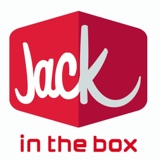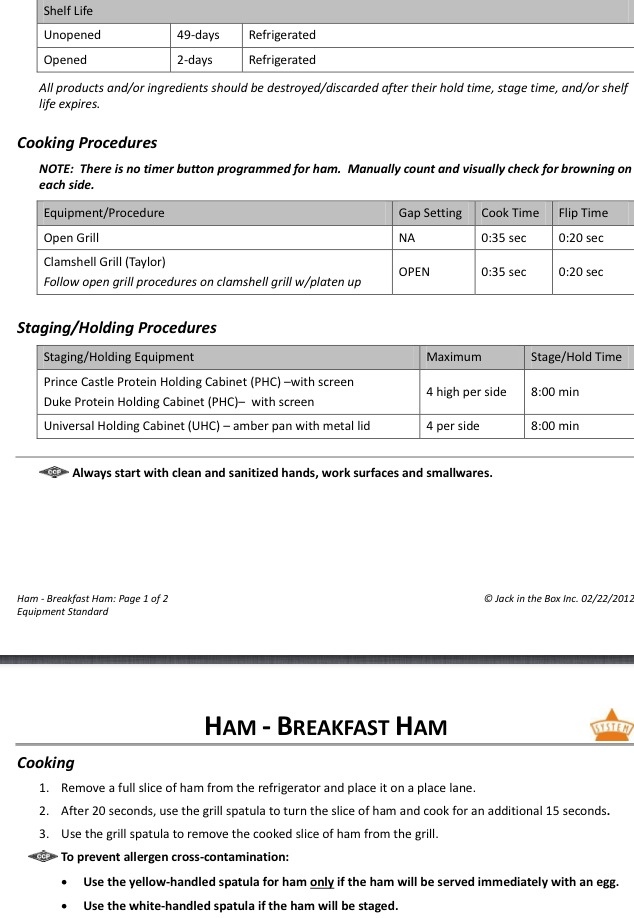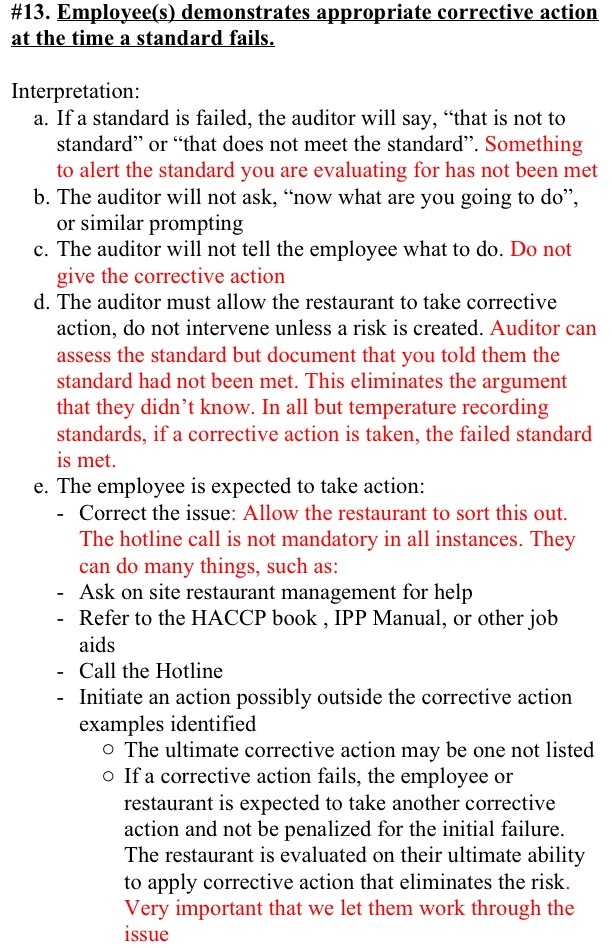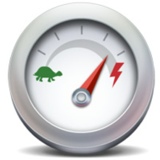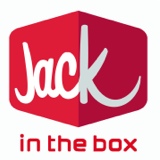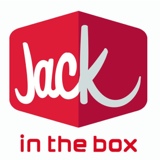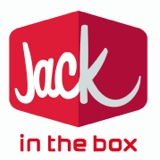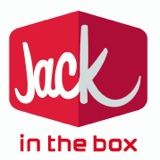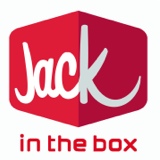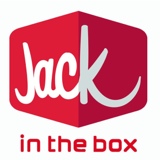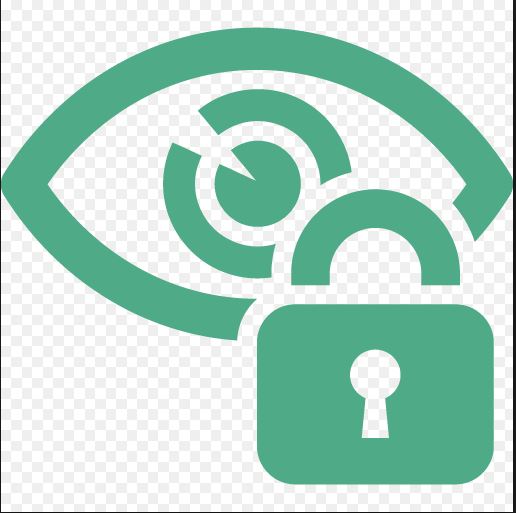Information
-
Restaurant #
-
Conducted on
-
Prepared by
-
Location
-
Manager/ Person In Charge
Food Safety
-
Iced tea liner at the self-serve station secured with a zip tie and the white tube it trimmed.<br>
-
No Employees are ill.
-
Allergens:<br> Among the most common allergy causing foods are: <br>1. Eggs <br>2. Fish <br>3. Milk <br>4. Peanuts <br>5. Tree Nuts <br>6. Shellfish <br>7. Soybeans <br>8. Wheat
-
Drink Machine:<br>No mold, debris, rust or slime on drink stations (self serve & stand-alone), soda nozzles/diffusers, ice machines, ice chutes and bins. <br>
-
ICE MACHINCES <br> DAILY <br> Clean Ice Machine Bins <br>1. Wring out a clean towel that has been dampened with sanitizer solution to avoid any sanitizer dripping onto the ice. <br>2. Wipe the inside and outside of the ice deflector with this clean cloth dampened with sanitizer solution. <br> Clean Ice Bucket and Scoop <br>1. Clean the ice bucket and scoop nightly using the 3-compartment sink (wash-rinse-sanitize) method.
-
FOOD SAFETY RISK ASSESSMENT <br> No imminent food safety risks present: <br>1. Sewage/standing water present on floors or in sinks and or drains <br>2. Electrical power outage <br>3. No water / no hot water <br>4. Pest infestation <br>5. Unsanitary conditions: not clean; tending to harbor or spread disease; contaminated. <br>6. Fire <br> CORRECTIVE ACTION:<br>1. Close the restaurant.<br>2. Call Mgr and DM immediately.<br>3. Call QA Hotline.<br>4. After the problem solved, clean and sanitized, perform HACCP and call QA Hotline.<br>
-
HACCP Book
-
HACCP filled out properly.
-
Knowledge of HACCP System Tools.
-
Corrective action of any equipment malfunction and missing info.
-
N/A is not necessary for the item that doesn't exist.
-
Sanitized Water
-
Demonstrate preparation for sanitized water correctly with correct strength of 300ppm.
-
All containers were labeled " Sanitized Water".
-
The sanitized water at in the container at least 1" high.
-
Shake & Smoothie Machine.
-
Wash hands before taking temperature and sanitize probe before and after checking temperature.
-
The minimum acceptable temperature for the shake and smoothie is 41.4F.
-
Check temperature in 3 spots: front, middle and back. Take the highest number.
-
Wait 1 hour after filling the milk shake before taking temperature.
-
Corrective action:<br>1. Notify your team specially cashiers not to sale any shake or smoothie.<br>2. Turn off the shake or smoothie machine and drain out shake and smoothie immediately.<br>3. Record the corrective action on the HACCP book.<br>4. Call Facility service.<br>5. Wash and sanitize shake or smoothie machine.
-
Grill Station.
-
Cooking Ham Procedure
-
Tools are rotated every 4 hours.
-
Wash hands and wear gloves before taking temperature and sanitize probe before and after checking temperature.
-
Apply a quarter coin size spot of butter in the middle of the lane.
-
The minimum temperature of the grill is 325F. (350+/-25)
-
Corrective action in case the temperature of the grill is not met standard.<br>1. Notify your team specially cooks not to use that lane.<br>2. Block the law using aluminum container.<br>3. Record the corrective action on the HACCP book.<br>4. Call Facility service.
-
Using the lowest temperature lane to cook patty.
-
Perform final flip and visual check.
-
If using press on the patty, after cooked patty need to be used immediately other wise that patty need to be discharge.
-
The minimum temperature of the patty is 155F or below.
-
Corrective action in case the temperature of the patty is not met standard.<br>1. Discharge the patty immediately.<br>2. Perform cooking a new patty within 5 minutes.<br>3. Sanitize the probe again before checking temperature on the new patty.<br>4. If the temperature is still below 155F, identify cooks not to use, block the lane, write down on HACCP and call the facility service.
-
Fryer station
-
Tools are rotated every 4 hours.
-
Wash hands and wear gloves before taking temperature and sanitize probe before and after checking temperature.
-
The minimum temperature of fryer is 350F. (365F +/- 15).
-
Corrective action in case the temperature of fryer doesn't meet standard:<br>1. Notify fryer person to not use that vat.<br>2. Block the vat using basket and taco rack.<br>3. Adjust the temperature of the fryer if applicable.<br>4. Recheck the temperature again.<br>5. If still unacceptable, notify fryer person not to use that vat.<br>6. Block the vat using basket and taco rack.<br>7. Write the corrective action on HACCP book.<br>8. Call Mgr and DM to call facility service.
-
Air Temperature
-
Show how to check air temperature in the walk-in cooler, walk-in freezer and POU
-
Acceptable minimum temperature for freezer: 20F and refrigerator: 41F.
-
Corrective action after first checking temperature is not met standard. <br>Corrective action on the HACCP book.
-
Rice
-
Wash hands before taking temperature and sanitize probe before and after checking temperature.
-
Minimum of 135F.
-
Using meat probe to check the temperature.
-
Hot Water
-
Know how to check the temperature for hot water and minimum temperature 100F.
-
Corrective action in case the temperature of hot water does not meet standard:<br>1. Close restaurant.<br>2. Notify Mgr and DM to call facility service.<br>3. Call QA.<br>4. After fixed, call QA, perform hand wash.
-
Hand Wash
-
(Hand wash) After conducting a cleaning activity, handling dirty equipment, utensil or surface, touching a trash can or picking up any dropped food or item from the floor.<br>Interpretation: There are many opportunities. We are going to define the 10 most likely. Beyond these 10, coach, don’t assess.<br>a. Qualifies for hand wash<br>1. Sweeping<br>2. Mopping<br>3. Handling garbage cans and garbage bags<br>4. Tearing down, re-building, conducting maintenance, or lubricating equipment<br>5. Washing dishes<br>6. Picking food or garbage off the floor with hands (or gloved hands)<br>7. Cleaning the restroom<br>8. Cleaning bodily fluids<br>9. Removing food and/or packaging and/or trash from tables<br>10. Wiping tables, chairs, high chairs<br>b. Do not assess if going from one cleaning activity to another<br>c. Do not assess a floor server or guest service if they don’t handle unprotected food or cutlery
-
(Hand wash) After touching human body parts, i.e., face, head, or hair<br> <br>Interpretation: Do not assess incidental contact with apron, or clothing.<br>This is truly an incidental brush or bump. If you can make a case that they cleaned their hands on their shirt or pants or apron, that can be assessed but it needs to be more than a pull or tug or hands on knees to look for something.
-
Wash hand at hand wash sink with hot water using soap until elbow at least 20 seconds, dry with the hand towel and sanitize.
-
When to wash your hands.
-
Key Observables:
